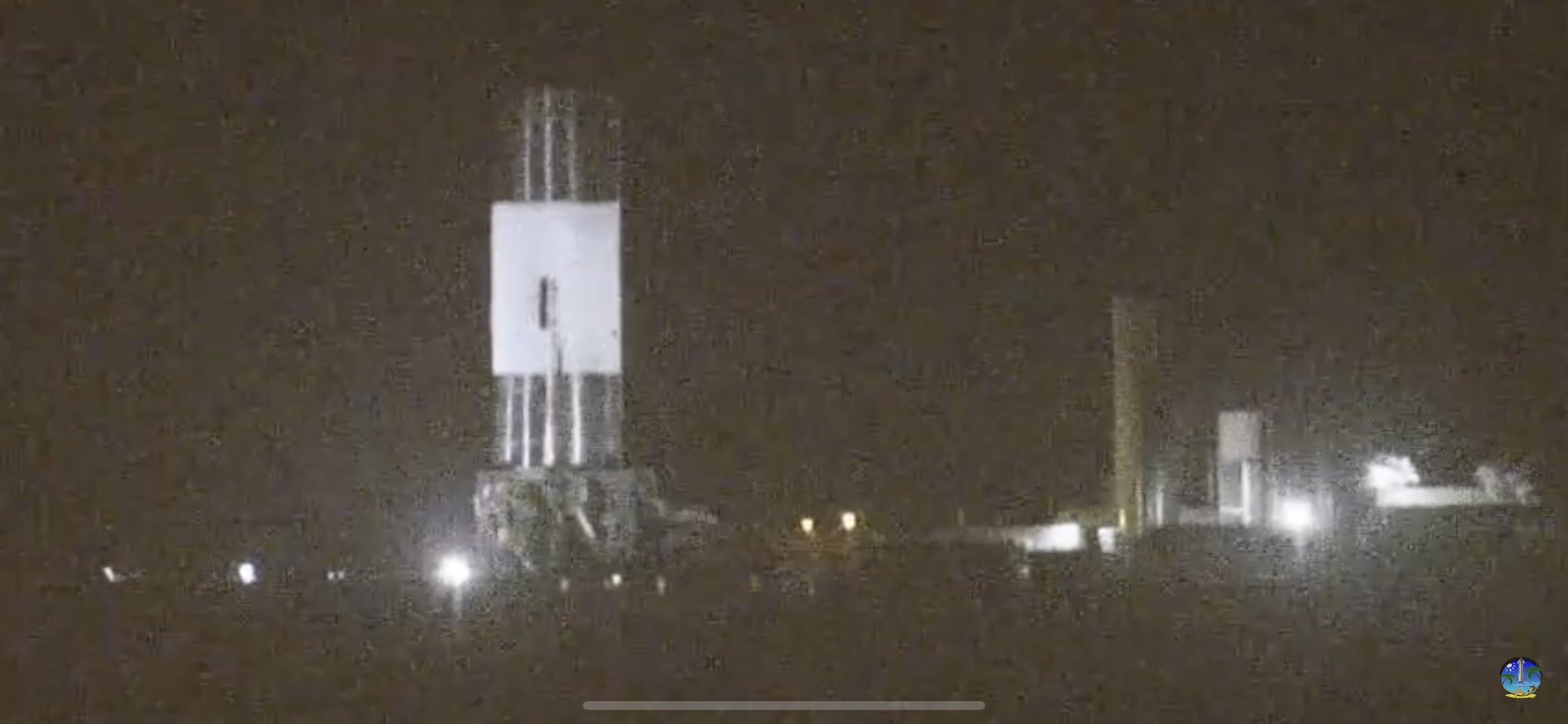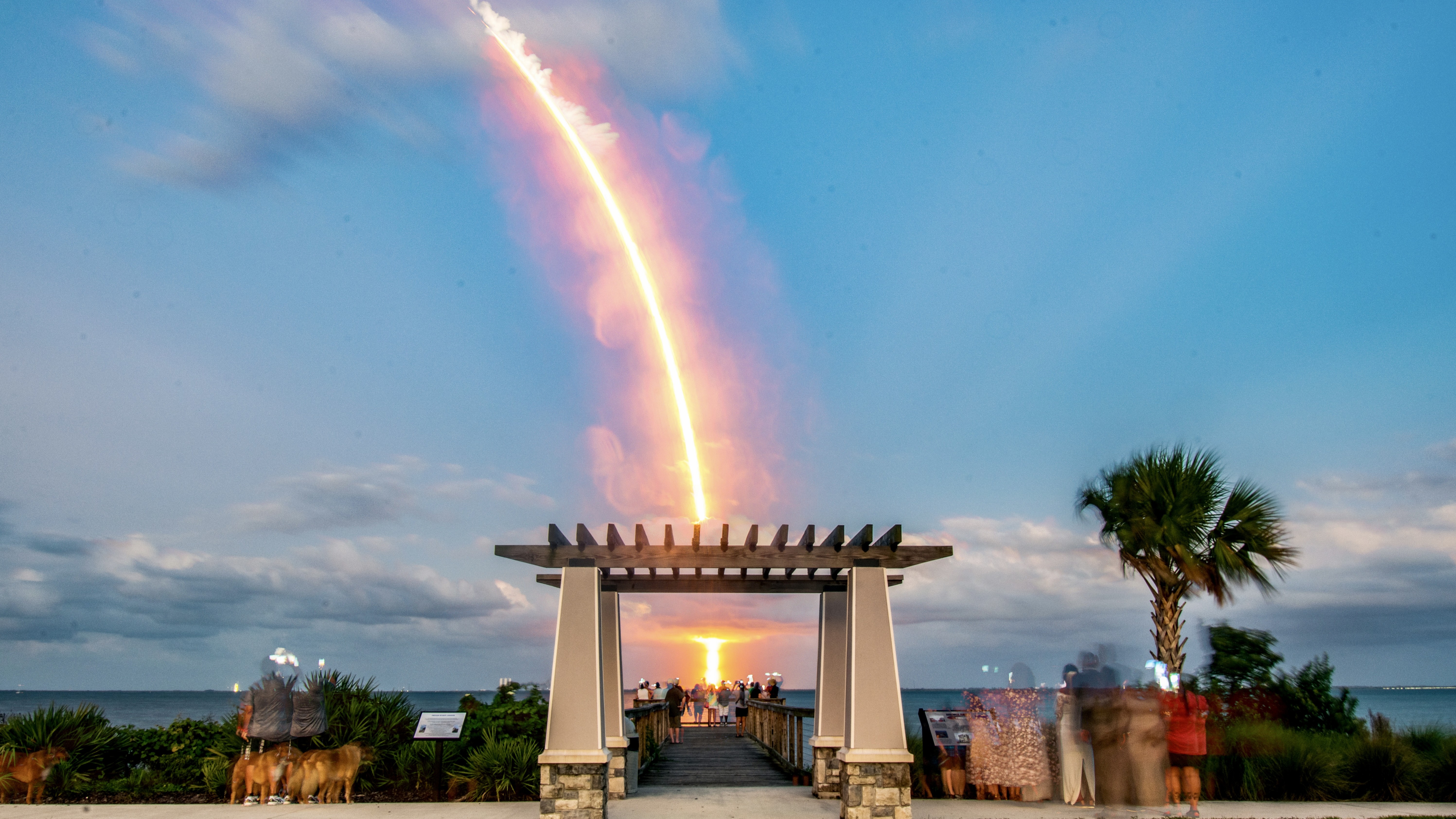SpaceX's Starship SN4 prototype passes another, tougher pressure test

SpaceX's latest Starship prototype keeps passing tests, edging closer and closer to a highly anticipated test flight.
The SN4 vehicle, the latest pathfinder for SpaceX's Starship Mars-colonization spacecraft, aced a high-pressure and high-simulated-thrust trial at the company's Boca Chica facilities in South Texas, SpaceX founder and CEO Elon Musk announced via Twitter on Saturday (May 9).
And this was a "cryo" test: the SN4 was filled with frigid liquid nitrogen, simulating the conditions experienced during operational missions, which will employ ultracold propellant.
Related: SpaceX's Starship and Super Heavy rocket in pictures
SN4 passed high pressure (7.5 bar) & engine thrust load at cryoMay 10, 2020
The SN4 already had a "cryo proof" success under its belt, surviving one on April 26. The vehicle endured pressures of 4.9 bar during that earlier test, compared to 7.5 bar over the weekend, Musk said. (Atmospheric pressure at sea level is 1 bar.)
The prototype has also performed two "static fires," lighting up its single Raptor engine briefly on May 5 and then again on May 7, both times remaining firmly on the ground.
But the SN4 looks poised to leave terra firma for the first time soon. Musk has said he wants the vehicle to make an uncrewed test flight to an altitude of about 500 feet (150 meters), and the prototype has now checked off a lot of boxes on the road to liftoff.
Breaking space news, the latest updates on rocket launches, skywatching events and more!
That's probably as high as the SN4 will get. SpaceX is already building its successor, the three-engine SN5, which Musk has said will target a test-flight altitude of 12 miles (20 kilometers).
The operational Starship vehicle, toward which SpaceX is iterating, will sport six Raptor engines and be capable of launching itself off the moon and Mars. But the 100-passenger spacecraft will need the help of the 31-engine Super Heavy rocket to get off Earth's surface.
Both Starship and Super Heavy will be fully and rapidly reusable, Musk has said. Super Heavy will come back to Earth for vertical landings shortly after liftoff, whereas each Starship will be able to fly many missions once aloft.
If Musk's long-term vision becomes reality, those missions will target a variety of destinations throughout the solar system, including the moon. But Mars is the primary target; the billionaire entrepreneur sees Starship and Super Heavy making colonization of the Red Planet, his long-held ambition, economically feasible.
Just one Starship prototype has gotten off the ground to date. A stubby vehicle called Starhopper made a few brief leaps in 2019 before being retired in August of that year.
- SpaceX: Facts about Elon Musk's private spaceflight company
- Welders wanted: SpaceX is hiring to ramp up production of stainless steel Starship
- How living on Mars could challenge colonists (infographic)
Mike Wall is the author of "Out There" (Grand Central Publishing, 2018; illustrated by Karl Tate), a book about the search for alien life. Follow him on Twitter @michaeldwall. Follow us on Twitter @Spacedotcom or Facebook.
OFFER: Save 45% on 'All About Space' 'How it Works' and 'All About History'!
<p>For a limited time, you can take out a digital subscription to any of <a href="https://www.space.com/your-favorite-magazines-space-science-deal-discount.html" target="_blank">our best-selling science magazines for just $2.38 per month, or 45% off the standard price for the first three months.
Michael Wall is a Senior Space Writer with Space.com and joined the team in 2010. He primarily covers exoplanets, spaceflight and military space, but has been known to dabble in the space art beat. His book about the search for alien life, "Out There," was published on Nov. 13, 2018. Before becoming a science writer, Michael worked as a herpetologist and wildlife biologist. He has a Ph.D. in evolutionary biology from the University of Sydney, Australia, a bachelor's degree from the University of Arizona, and a graduate certificate in science writing from the University of California, Santa Cruz. To find out what his latest project is, you can follow Michael on Twitter.

